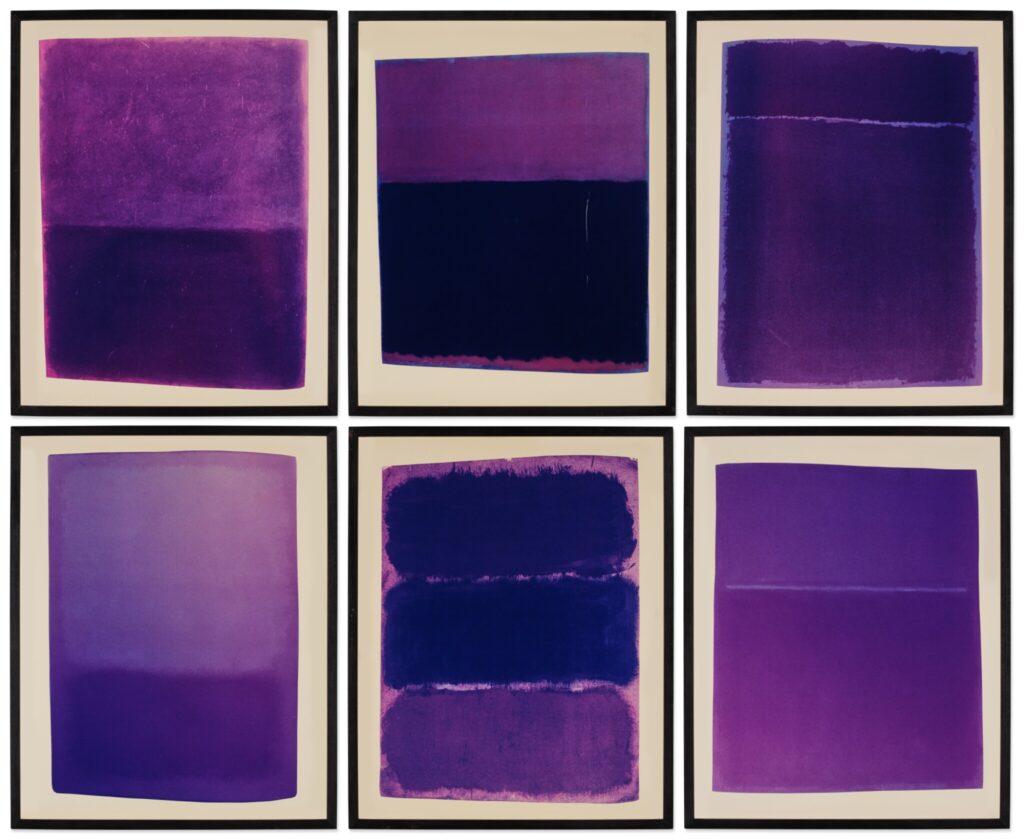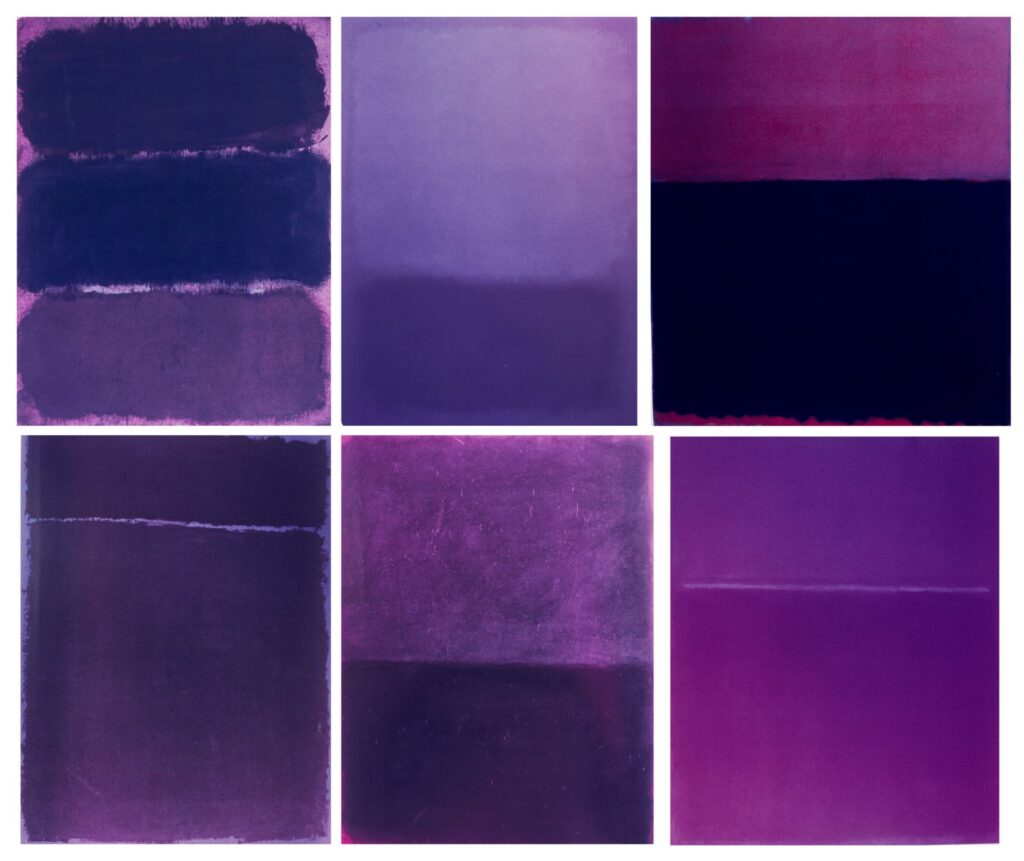
I want to find something more to post about these Mike Kelley photos than that he made them in 1985 by jankily rephotographing a Rothko catalogue; he published them in 1996, one of a couple of projects done with Patrick Painter; they were some of the half dozen or so works Elton John bought from Vaknin Schwartz, the once-hot Atlanta gallery down the street from his condo; and they’re one of a thousand other things he’s selling this week at Christie’s.
But it’s not easy.
No one’s really said much more than Kelley did in Minor Histories, his collected writings [pdf], where he explained the photos’ “hue has been shifted from Rothko’s original coloration toward purple. His purple paintings, generally considered sad and soulful, fit the mythology of his tortured ‘artistic’ life.5” The footnote quotes Lee Seldes’ callous description of the bloodstain from Rothko’s suicide as a dramatic action painting. It’s not clear if the citation is from the artist or the editor, John C. Welchman. But in his 1986 performance/publication/installation, Plato’s Cave, Rothko’s Chapel, Lincoln’s Profile, Kelley included banners referencing both Rothko’s death and the Shroud of Turin.

The title of the photos, More Tragic! More Plangent!…More Purple!, feels like a quote, or a specific reference, but none is turning up. Plangent especially feels like a word Kelley would find and hold up for observation. I looked, too, for Kelley’s source: was it the catalogue from Diane Waldman’s 1978 Guggenheim retrospective? Or maybe these are works on paper, from the 1984 Dore Ashton/Bonnie Clearwater catalogue.
In a note, Welchman does mention Kelley’s distinct approach to rephotography and appropriation, compared to the Pictures artists working in New York. I’d say enough time has passed for a more comprehensive view of appropriation that accounts for both Kelley’s and Prince’s deskilled punk and poetry.
In the published text version [pdf] of Plato’s Cave, Rothko’s Chapel, Lincoln’s Profile, Kelley declared a Rothkoian Purple era:
It has long been noted that certain colors are of certain times, and decades have even come to be known by the name of their dominant color. The profiles of those eras lie under those filters, prey to the prominant style of theatrical paint and lighting, ringed by those false halos and mistakenly weighted by those chiaroscuros. Someone has their finger on the scale. Now it is the purple Rothkoian light of tragedy that has come into the forefront. The shade of Christ’s bruises are constant no matter what skin tone acts as their background. Black Jesus, Red Jesus, Yellow Jesus, White Jesus all lie together in the same melting pot where fatty purple cooks to the top. This plum field painting of vital fluid darkens in hue as it flutters down into the depths. The rainbow of death: Green Kryptonite, Gold Kryptonite, Red Kryptonite, Blue Kryptonite, Jewel Kryptonite exert no influence here at the edge of night.
It was not easy to read them the same way, or to be quite so thrilled by their plangent tragedy, when they were shown at PS1 in 2013, just after Kelley’s own death. Does another decade help?
[FEW DAYS LATER UPDATE: I found 5/6 of the Rothkos Kelley photographed in the NGA’s 1984 Works on Paper catalogue. And misidentified the 6th, but I’ll go back.]
22 Feb 2024, the Elton John Atlanta Day Sale, Lot 213, Mike Kelley, More Tragic! More Plangent!…More Purple! [christies. update: sold, purportedly, to an absentee bidder at $60,000, or 75,600 with premium]
Minor Histories [pdf via monoskop]
Plato’s Cave, Rothko’s Chapel, Lincoln’s Profile [pdf via monoskop]
